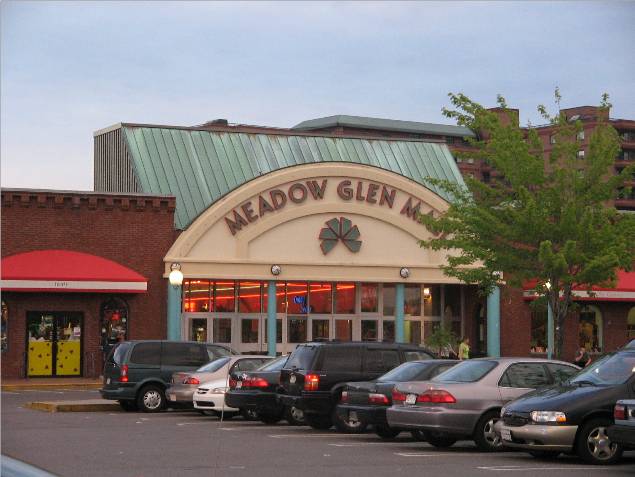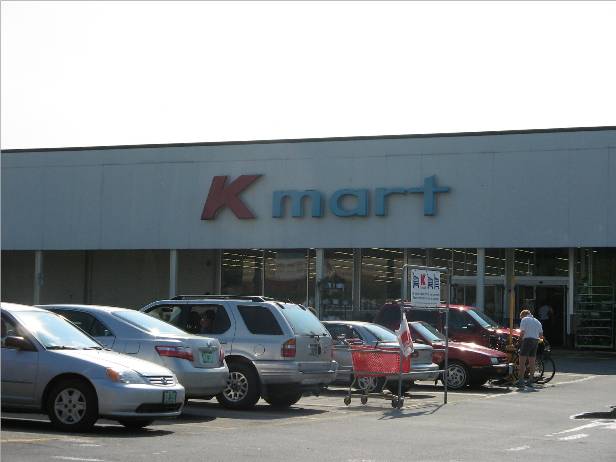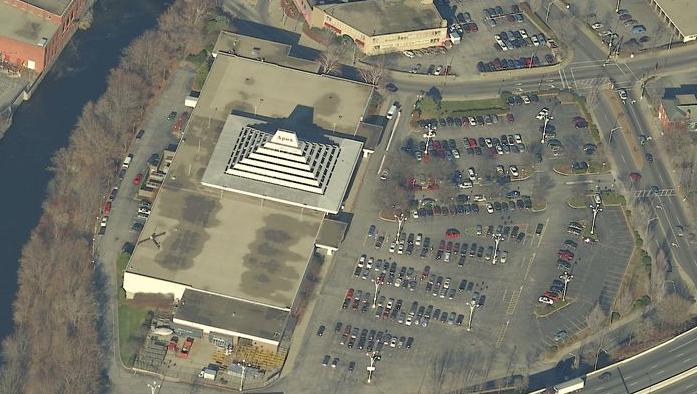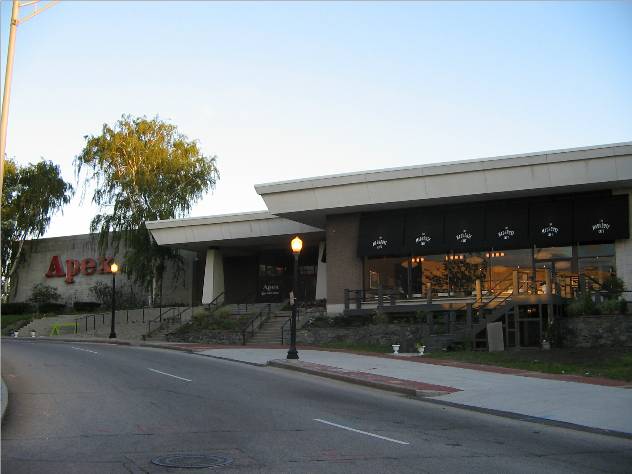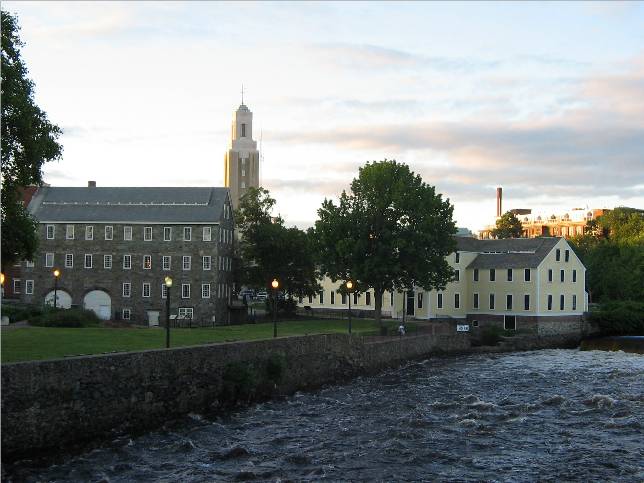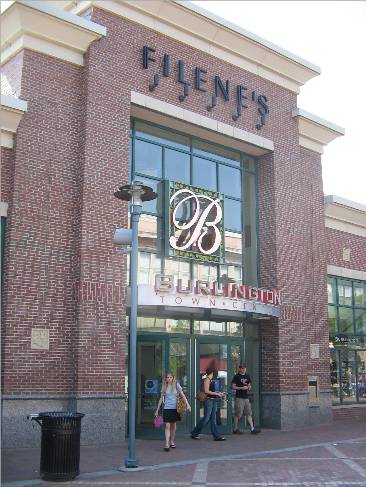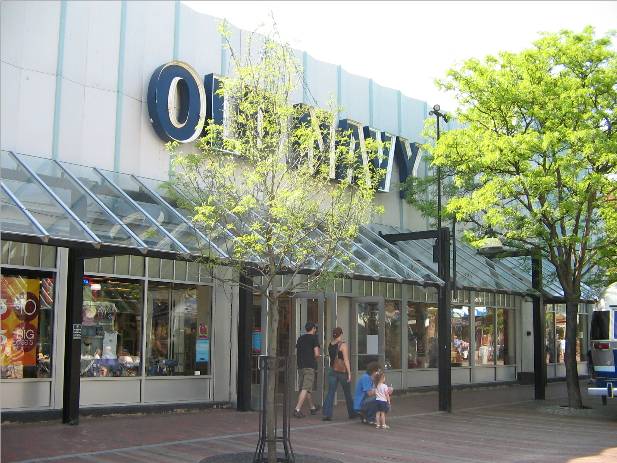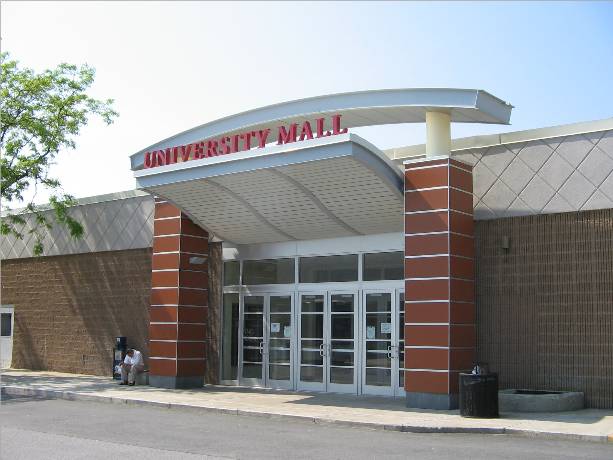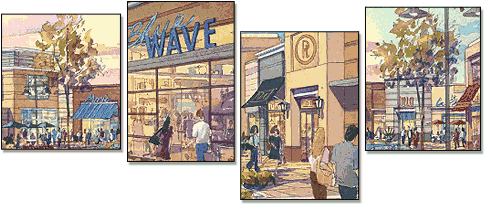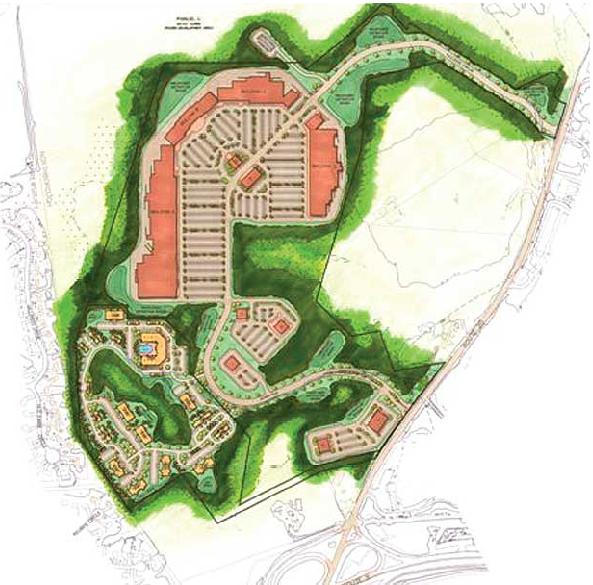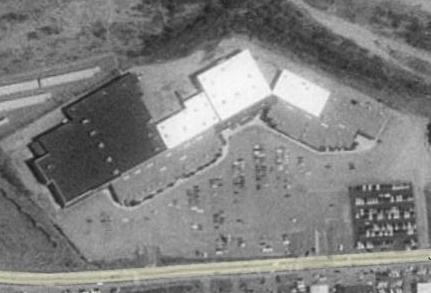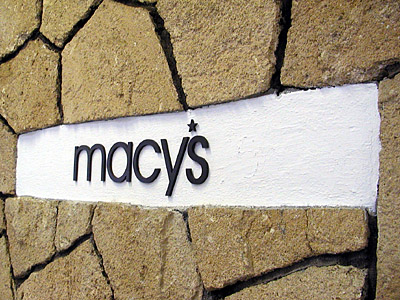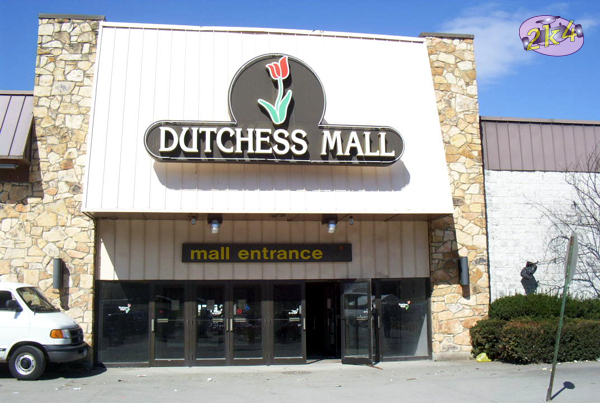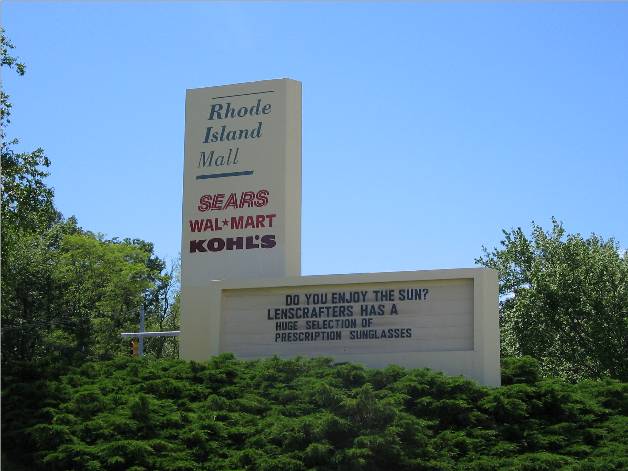
This is a tragic one.
When I was a kid, Rhode Island Mall was the mall. I always derisively labeled the neighboring Warwick Mall–the successful one today–as the “clothes mall.” Rhode Island Mall was the fun mall. It had the Aladdin’s Castle arcade, it had video game stores, toy stores, and everything else a kid would want. Now it has next to nothing: it’s one of the most notorious dead malls in New England.
What’s especially sad is that it didn’t have to be this way. The Rhode Island Mall had a long, long run as a big and successful center, and it died mostly due to a set of circumstances it couldn’t control and a few questionable management decisions.
Built in 1968 as the “Midland Mall,” this was the first suburban enclosed shopping mall in Rhode Island, and the first two level shopping mall in New England. Built on what was then remote swamplands, it was located next to I-95 and later I-295, and would be the catalyst for a massive amount of retail development that would turn this stretch of route 2 into “Rhode Island’s Main Street.” Providence experienced the greatest proportionate outmigration of any major American city in the post-war era, and Warwick, a suburb about 10 minutes south of the city, absorbed many of these residents, balooning to 85,000 people. To this day, Warwick is the second most populous city in Rhode Island, and many other suburbs in the area (such as neighboring Cranston, with a population of 75,000) are uncharacteristically large.
The Rhode Island Mall is a simple, two level dumbell style mall. It was built with a Sears store anchoring the mall’s west end. As far back as I can remember, the mall’s eastern anchor was a location of Hartford’s G. Fox chain, but it may not have been original to the mall. Despite a seemingly uninspiring layout, the mall is one of the widest and most open malls of its style that I’ve visited, lending the central common areas a certain grandiosity.
In 1972, the larger Warwick Mall opened just to the north of the then-still-Midland Mall. If you look at this satellite photo, you can see how the smaller Rhode Island Mall (at the bottom of the frame) is within a stone’s throw of the Warwick Mall. Warwick was more fashion-oriented from the start, and included Rhode Island’s first outlets of Boston mainstay department stores Filene’s and Jordan Marsh, so this presented a considerable challenge. However, because neither mall was terribly large and there was room for both to house stores without much overlap, they co-existed very peacefully for a long time. The presence of both malls made Warwick into one of the most major retail destinations in New England, and many of the shopping centers that line route 2 for miles in each direction sprung up during the era when both malls were thriving.
In 1984, The Midland Mall underwent an extensive renovation and rebranding, and this was when the Rhode Island Mall name was born. This was still relatively early for a mall to renovate since most of them were still in their infancy, and as such the mall received a substantial shot in the arm as a result. Mall owners added the glass elevator that’s present today, as well as a large food court on the second level outside G. Fox called the Greenhouse Cafes, which was the very first mall food court in the entire Providence metropolitan area. By the late 1980s, the Rhode Island Mall was so popular that management attempted to make room for more tenants by constructing temporary, cubicle-style spaces in the center of the mall’s wide first floor corridor.
Despite the opening of the 3-level, gargantuan Emerald Square Mall in North Attleboro, Massachusetts in 1989 (the first of the larger, more modern enclosed malls in metro Providence), the Rhode Island Mall didn’t suffer–the bigger mall was just a bit too far away, and the two malls combined were still larger than it. Even when Warwick Mall finally renovated in 1991, adding an even larger food court than the Rhode Island Mall, it didn’t seem to have an impact.
The beginning of the end came around 1994, when the G. Fox chain, which was owned by The May Companies, acquired Filene’s. Because Filene’s was the stronger regional nameplate, the G. Fox stores were converted to Filene’s. For a time, this G. Fox store (which was relatively small) was converted to Filene’s, but as there was already a larger Filene’s at the Warwick Mall next door this was extremely redundant and it was closed within a year or two of the rebranding.
That began the long and very slow death of the Rhode Island Mall. Despite that Sears was the lone anchor remaining, most of the stores remained in the mall despite dwindling business, holding on to the hope that the G. Fox store would be filled, but nothing came. By 1997, the vacancies began piling up, and by 1998 there were rumors that the mall would be torn down and converted to another use despite a still-healthy occupancy rate.
In 1999 or 2000, it was announced that the G. Fox store and approximately 1/3 of the mall (including the Greenhouse Cafes food court area, which was now completely vacant) would be demolished to make room for two new anchors. A Wal-Mart would open on the first level, and the tenant for the second level was unannounced. Wal-Mart constructed a store in 2000, but it did not open into the mall, leaving a temporary construction wall to greet patrons inside of the mall. Many speculated that construction could not be completed until a second anchor built a store atop the new Wal-Mart. In 2002, Kohl’s announced that they would be the Rhode Island Mall’s third anchor, and many expected this strong trio of mid-market anchors to bring the mall back to prosperity.
Unfortunately, when Kohl’s was completed, it too did not open into the mall and it became obvious that both had every intention of turning their backs on the mall–permanently. Convinced that the mall would never be anything more than a dead mall again without more anchors, nearly all of the remaining tenants cleared out, leaving the mall extremely barren and empty. Miraculously, the Rhode Island Mall remains open but today there are only about ten stores (out of a high in the late 1980s of close to a hundred) still operating inside of the mall.
I firmly believe that if Kohl’s and Wal-Mart had opened into the mall then the Rhode Island Mall would still be successful today. The neighboring Warwick Mall, despite its size (about a million square feet) has room for only about 70 stores and Rhode Island could still house an additional 50 or so. There is plenty of market demand in the area for such purposes, and the roster of Sears, Wal-Mart, and Kohl’s is relatively strong for a value-oriented mall.
I’ve heard that Royal Ahold (the parent company of Stop and Shop Supermarkets) has leased much of the interior of the mall with the intention of blocking Wal-Mart from being able to expand their store into a supercenter should the mall itself close. I’m not sure if this is true, but if so, I would hope that Ahold would find it in their interest to try and sub-lease that space to tenants, even if they’re charity cases like local retailers or public interest groups.
The following is a 1970 photo of the Midland Mall that I found on Keith Milford’s excellent (in fact, it’s a must-see) Malls of America blog. I’ve also tried to repeat the same shot today, though the mezzanine level of the staircase visible at left was removed in the 1984 renovation:
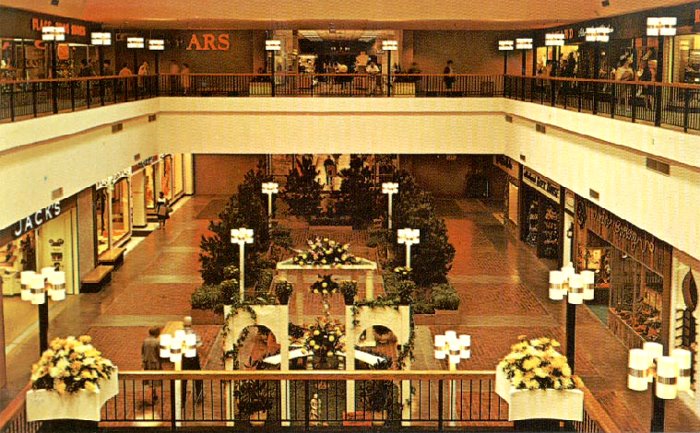

There are more pictures below, all taken June 11, 2006. A decade after the beginning of its agonizing, slow decline, the Rhode Island Mall is in sadder shape than ever. There are a few things to note. One photo shows the strange way in which Kohl’s is stacked above Wal-Mart, as visible from I-295. Also be sure to pay attention to the shots of the “temporary” construction wall that blocks the mall from Wal-Mart and Kohl’s. That wall has been in place since at least 2000.
















Prangeway: I visited Rhode Island Mall on August 25, 2001 and took the pictures below. Note the Tape World store still in operation, the Thom McAn labelscar, and the fact that the Kohls and Wal-Mart “anchors” were under construction with a glimmer of hope that they may open up to the mall. Unfortunately they didn’t, and as a result most of the stores open in the photographs below have closed since then and the mall is currently on life support.














This would change in 2000, when the 600,000 square foot big box-style Gateway Center opened in Everett, about a mile to the east. The center quickly became the center of retail activity in the area, and even duplicated several stores (Old Navy, Bath and Body Works, Famous Footwear) from Meadow Glen Mall. Then, in 2001, the entire Bradlees chain folded, causing the mall to lose its principal anchor.
